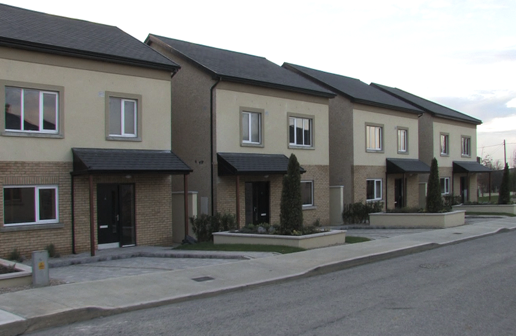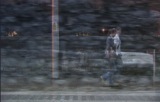With thanks to Thomas Maher
Texts from “Malachi Horan Remembers”.
by George A. Little, (M.H. Gill and son Ltd, Dublin, 1943).
Read by Florian Schneider
Music
DinahBird
JP Renoult
With thanks to Thomas Maher
Texts from “Malachi Horan Remembers”.
by George A. Little, (M.H. Gill and son Ltd, Dublin, 1943).
Read by Florian Schneider
Music
DinahBird
JP Renoult

Ghost Story. Extract 02’18”. 2008. 1080i HDV.
The expanse of land South West of Dublin now called South Dublin County was once home to Malachi Horan, an elderly and prolific storyteller, whose words were transcribed by Dublin doctor George A. Little. Regularly, and for many years during the late thirties, Dr Little climbed through Killenarden and up a narrow path over the foothills of the mountains to Malachi’s cottage, to painstakingly record Mr Horan’s memoirs. Local historian Tomas Maher accompanied us on a visit to Malachi Horan’s house; from a retired butcher - Coilin Rush’s father - we managed to borrow a copy of the now out of print text Malachi Horan Remembers. Our imagination was caught in particular by an account of Malachi’s walk home one evening from the pub, when he was followed by the ghost of a man who had recently been decapitated by the Dublin and Blessington Tram. The accident took place in the village of Templeogue. When Dublin had a public transport system worthy of the name, the Dublin & Blessington Steam Tramway passed through the village – much changed and now over-run by housing estates and boasting the population of a large town. The tram moved silently and accidents were common; many casualties were laid out temporarily in the Templeogue Inn, earning it the nickname The Morgue.
“Talking of coaches a minute ago brings to my mind the old steam trams that took their place. They were a powerful invention. Howsomeever, like many a thing nowadays; they were more anxious to get the job done than to count the cost. The slaughter on that line beat all...”
We discovered Malachi Horan's memoirs early in 2007 and that winter we undertook a series of filmed walks across the area formerly covered by Malachi on his ghostly journey home. We walked the same turf crossed by Malachi and his phantom follower over a hundred years before, but the gentle slopes and country lanes of his story have given way to regimented soldier houses, weary greens and empty tar-paved alleys.
Holy Turf records ordinary walks through ordinary places in ordinary suburbs. But this once pastoral plain at the base of the mountains is not an ordinary place, no place really is. Through the physical reality of today, we glimpse another reality, a complex mixture of the humdrum, myth, association and memory. Landmarks and other vestiges of the past (even if they are often cosy clichés) act as excellent anchors for us to attach ourselves to a place, helping us build a sense of identity within a given community: “that’s the house where Robert Emmet hid out” or “ have you heard of the ghost of Rathfarnham Castle?’ Jane Jacobs, in The Death and Life of Great American Cities, returns again and again to the need for a mixture of old and new in an urban context, without which emotional attachments to the place are not possible. In the flurry to create a new Dublin for a new modern Ireland we buried most of South Dublin's memories, a process that is now being duplicated all over Ireland. Our politicians, planners and developers at best fossilize, at worst steam-roll over the stuff of memory. If buildings, streets and historically significant places do survive, they are rarely part of a continuous urban fabric, but are preserved as relics or fetishes - charming anecdotal memories to peddle to public and tourists alike.We hesitated as to whether we should use Malachi’s story, worried at the risk of finding ourselves peddling the same anecdotes, and finally we recorded the story with a friend, a German actor, who reads aloud the words with an unmistakably foreign timber, creating anthropological distance and emptying it of its stage Irish potential. This recording now accompanies our walks through Malachi's turf.
PREMISES
PRACTICES
PLACES
You'll come and find the place
PRODUCTION
Moving Dublin explores the everyday world of movement in Dublin and its vast sprawling suburbs spreading out west from the coastal city. We look at how far the contemporary world of the Dublin commuter has strayed from the civic realm it constituted when Joyce wrote the Wandering Rocks chapter of Ulysses.
Moving Dublin is to be published in the form of a book and DVD in March 2009 by Gandon Editions
Moving Dublin has been commissioned by South Dublin County Council through In Context 3 and funded under the Department of Environment, Heritage and Local Government’s Per Cent for Art Scheme.

Watch this video on
The Hungry Grass. 02’02”. 2008. 1080i HDV.
Watch this video on



You'll Come And Find The Place (03’30”)
with Jean Philippe Renoult
Blowin’ down the motorway (01’31”)
With Joe Naughton
Gangland (extact 01’52”)
PC can’t play these clips?




Vico Road (extract 03’14”)
With Jobst Graeve




23 April 2009: Moving Dublin (the Book and the Film) launched by Minister Eamon Ryan at the Broadcast Gallery Dublin.


Luas Carol (extract ‘Museum’ 01’20”)
With with J P Renoult & Dinah Bird


The Observer Effect (19’50”)
With students of Collinstown Park CC
